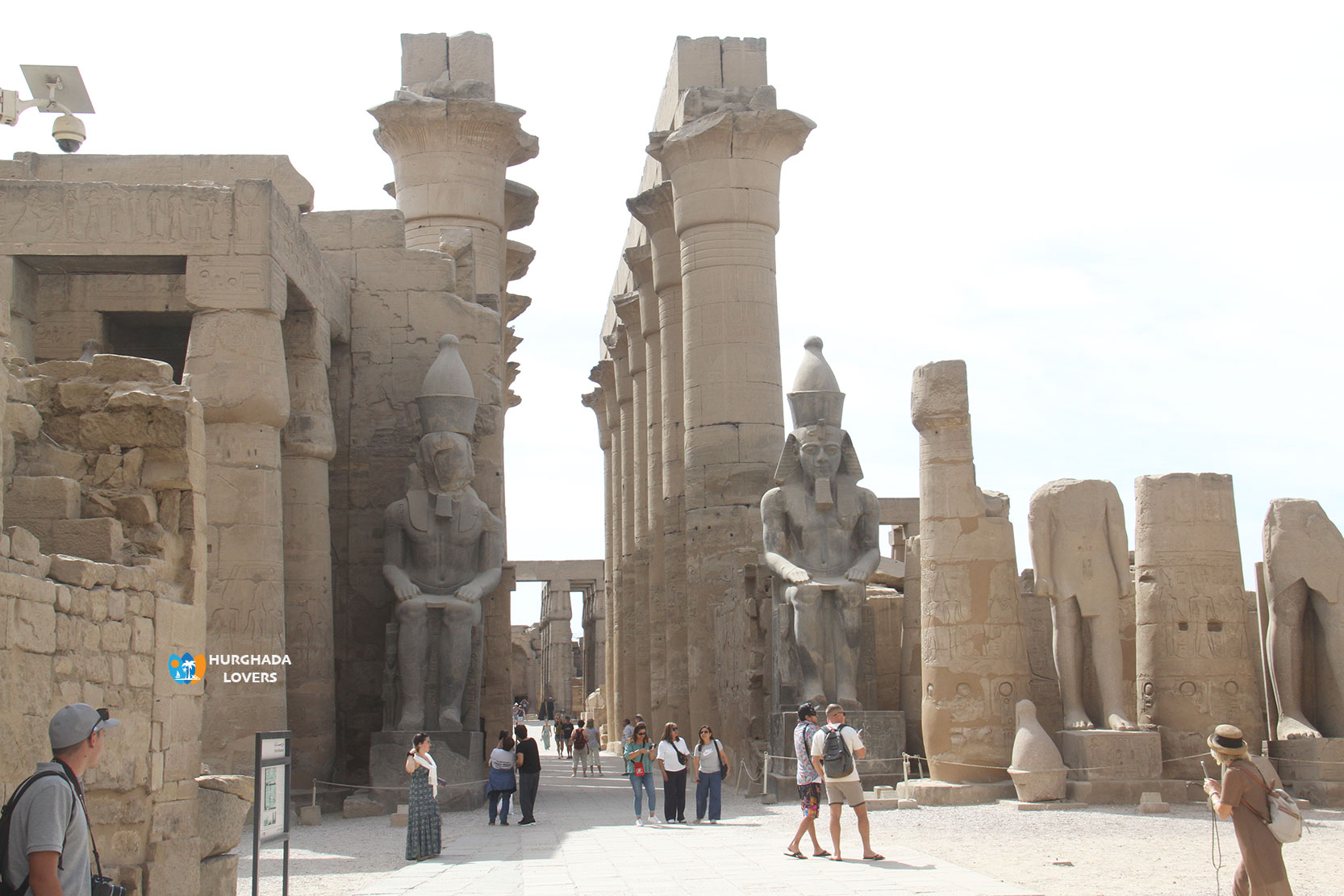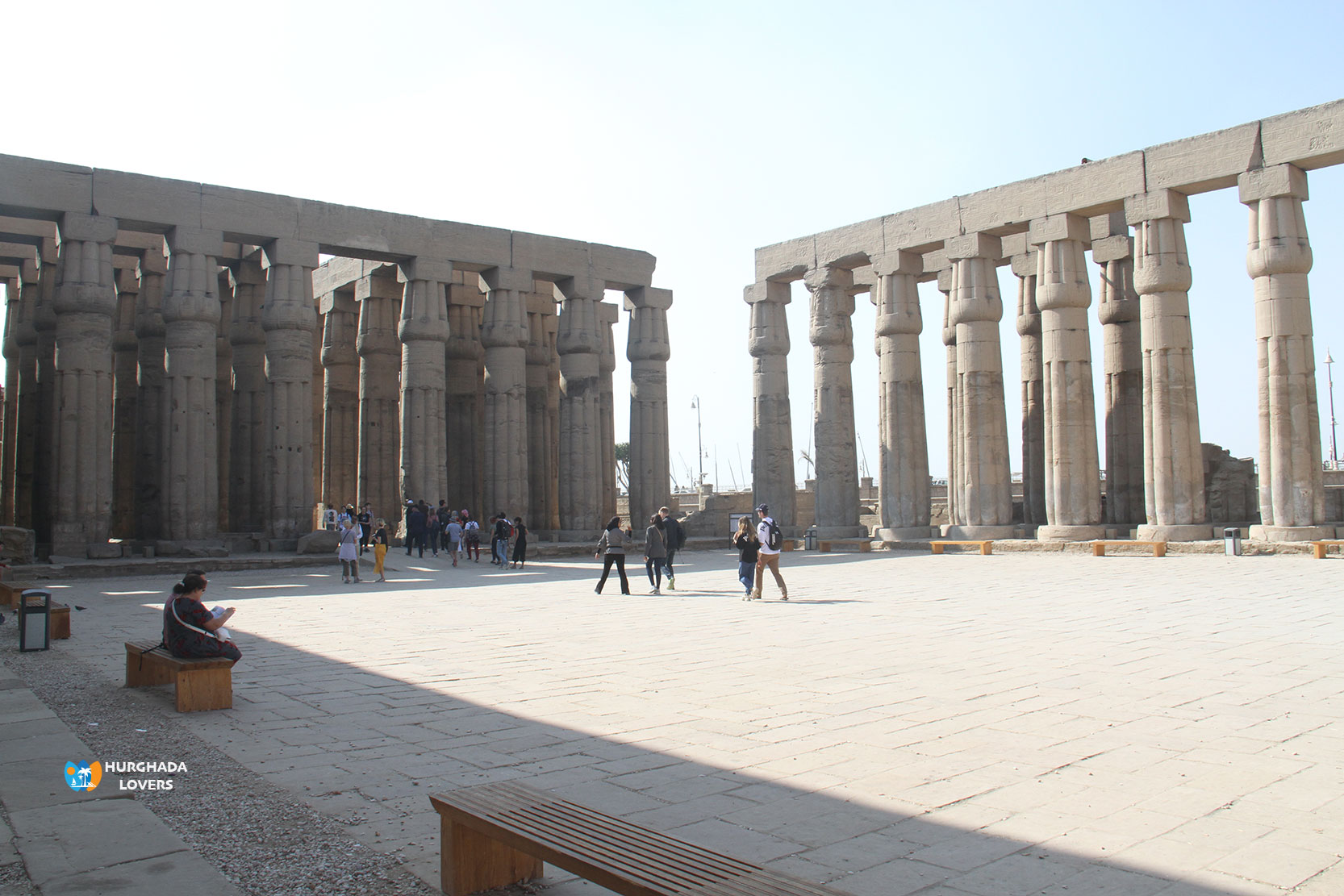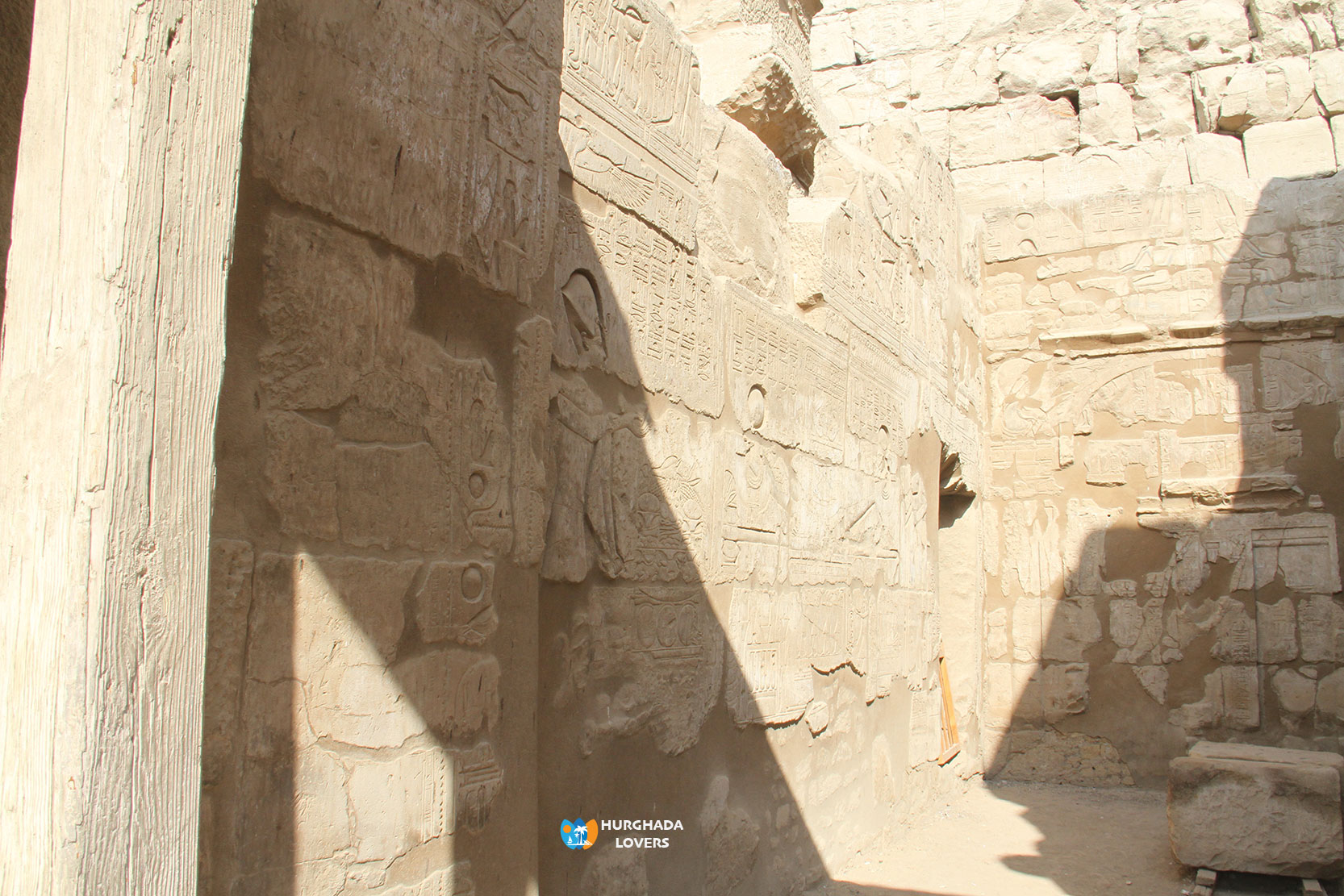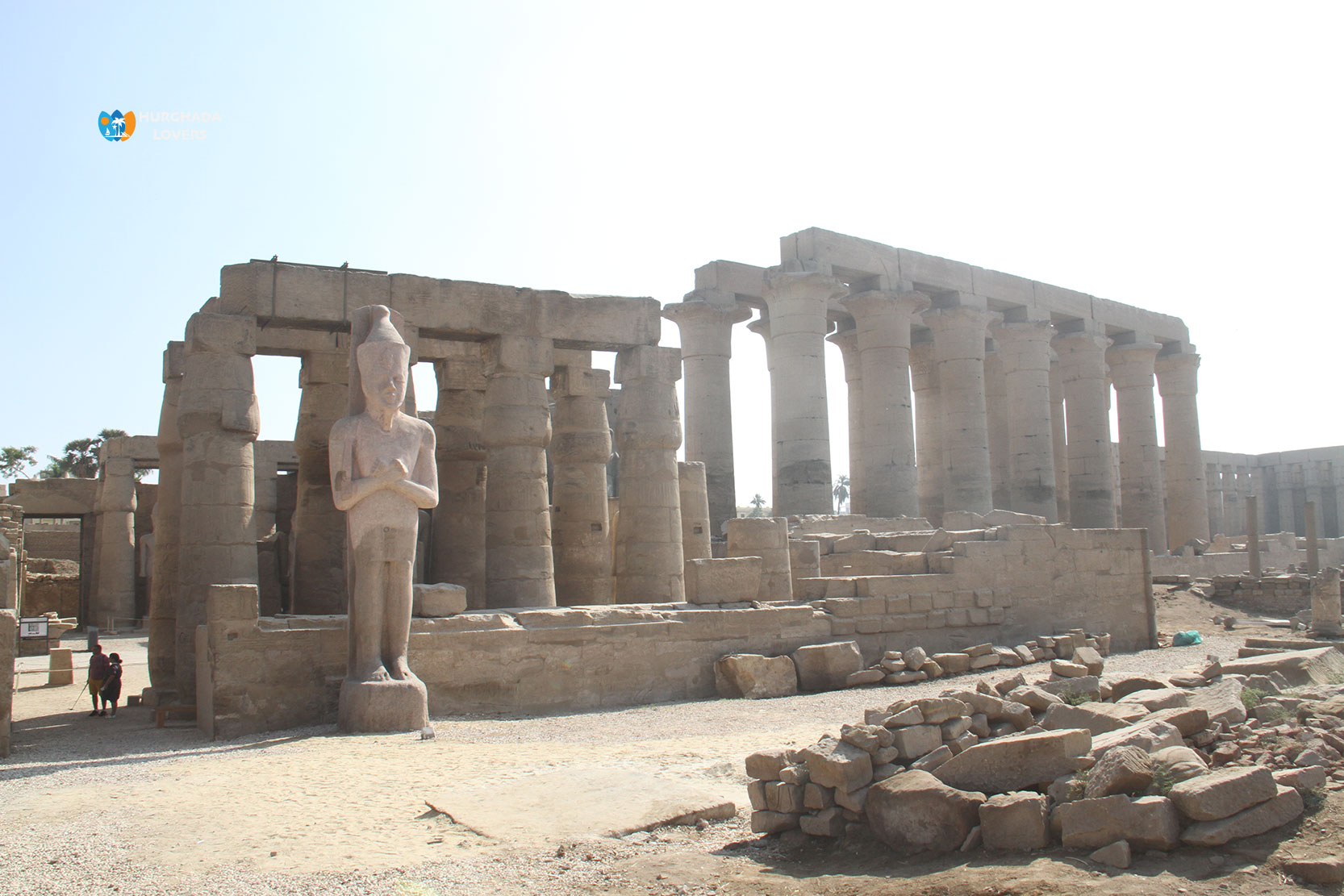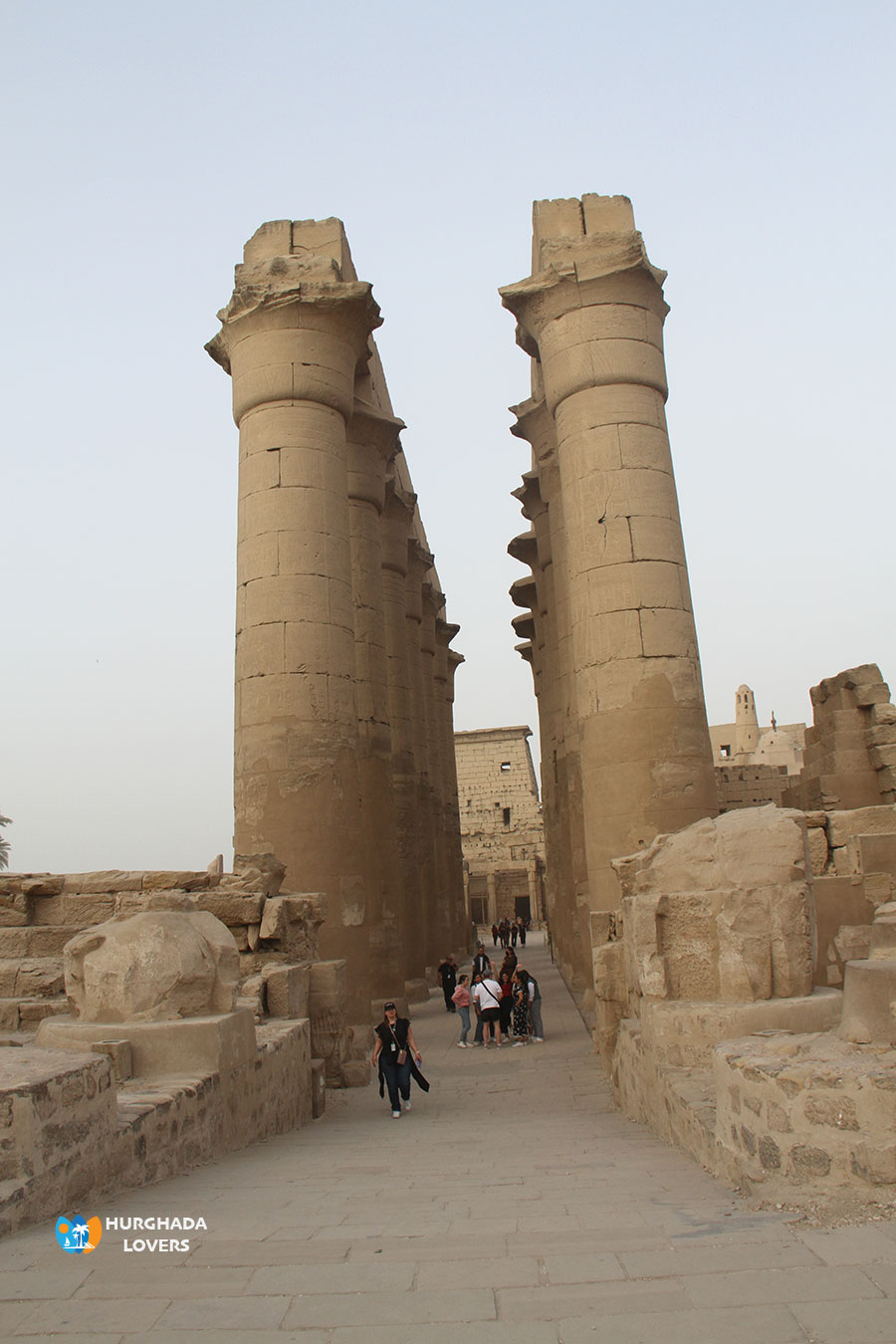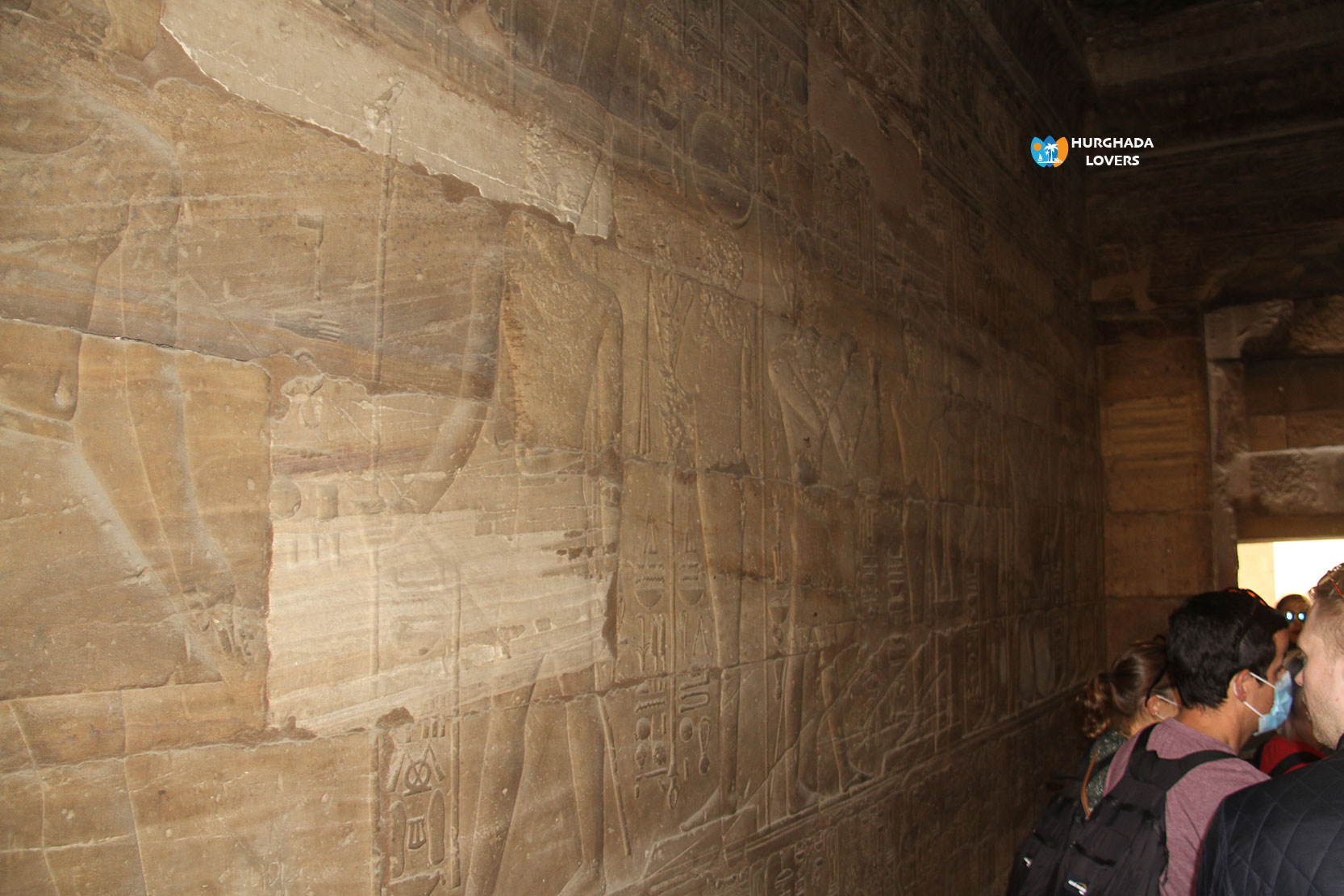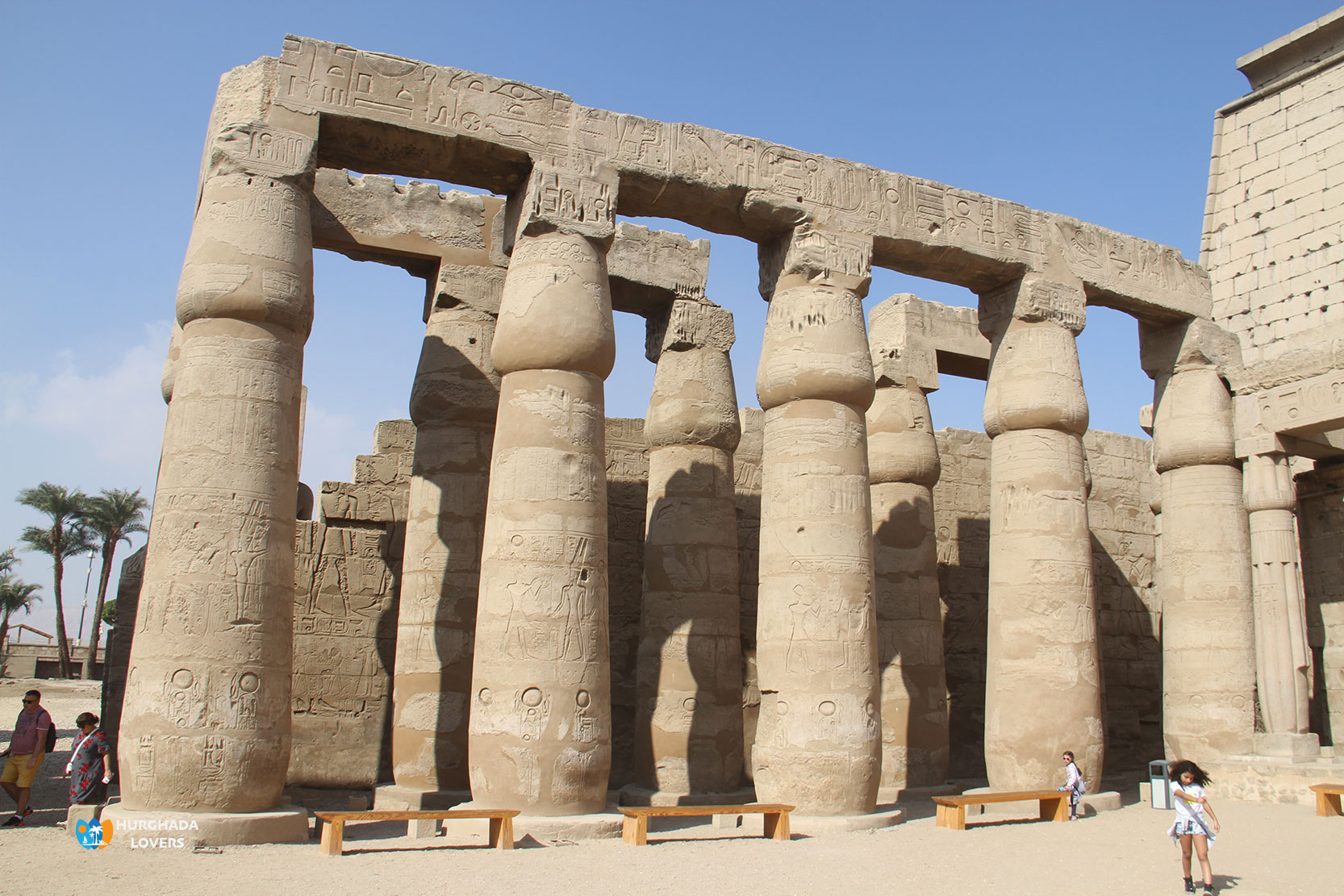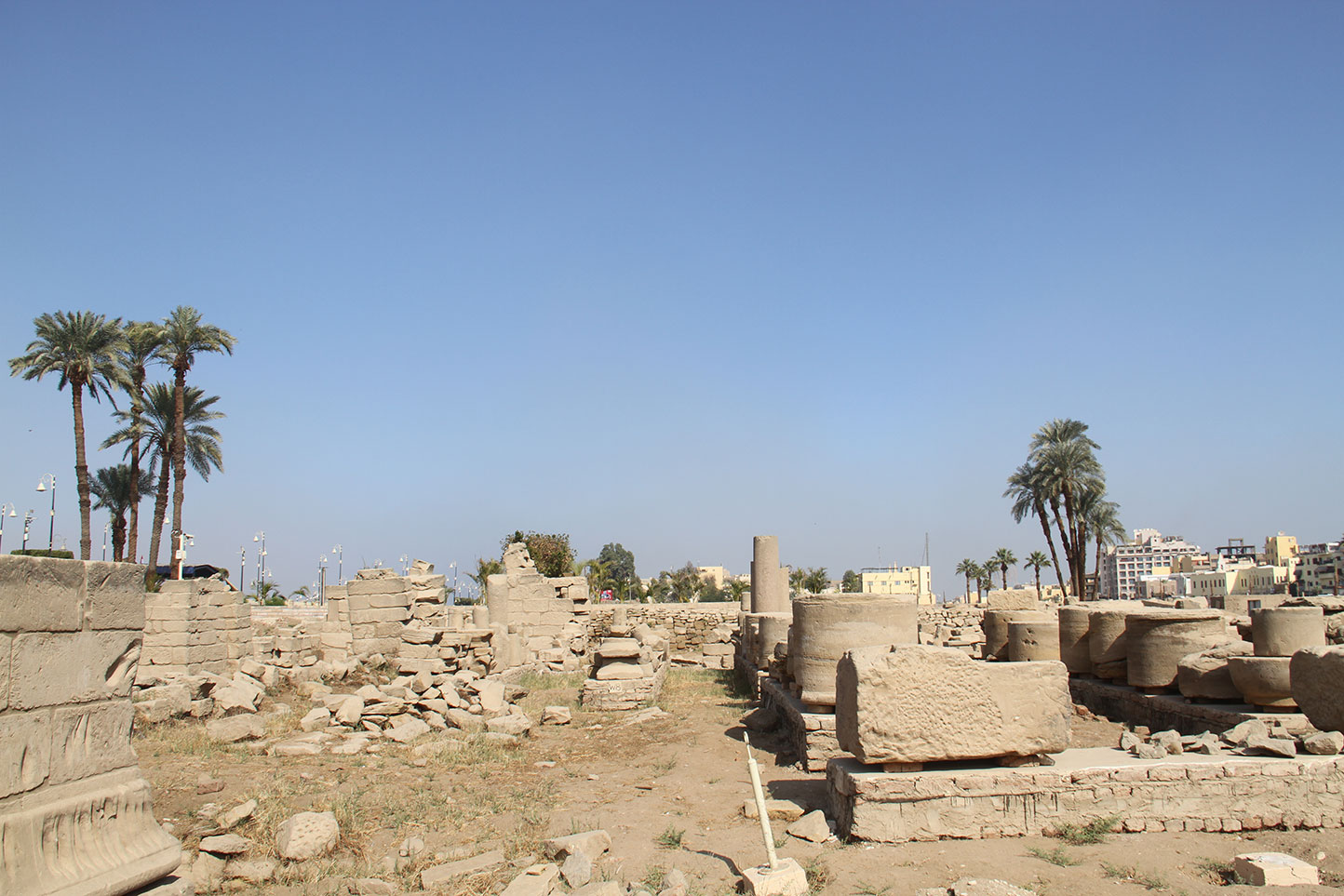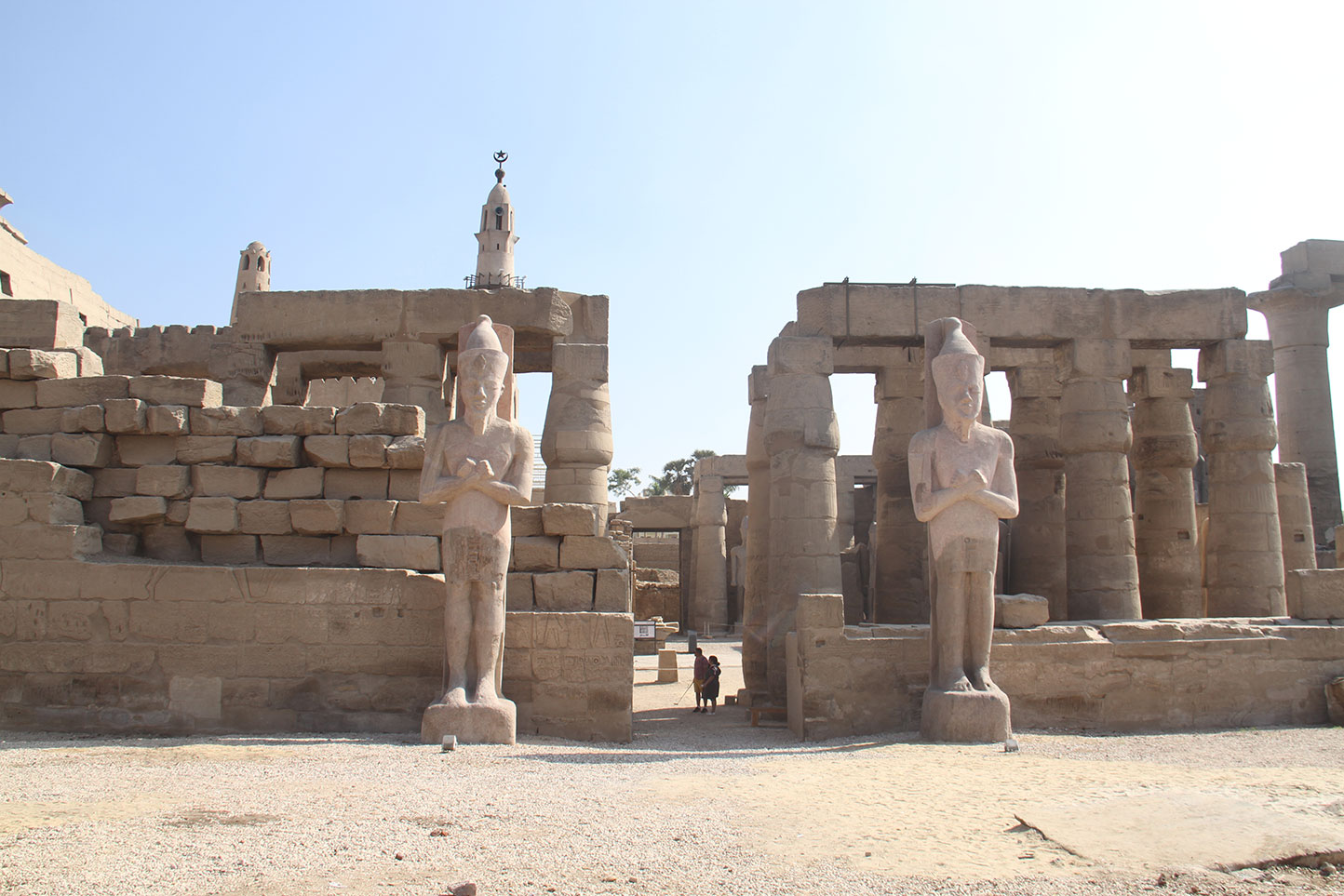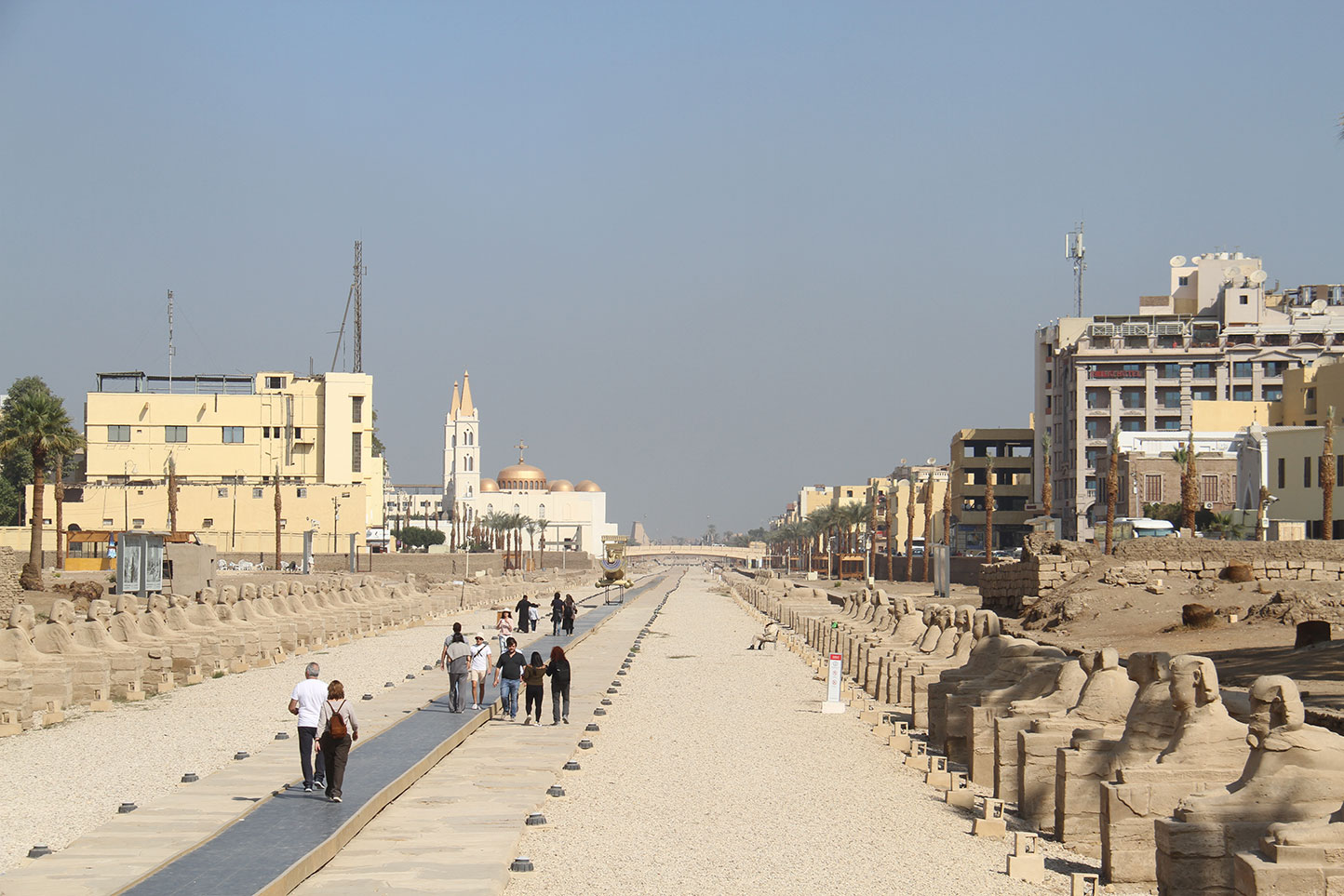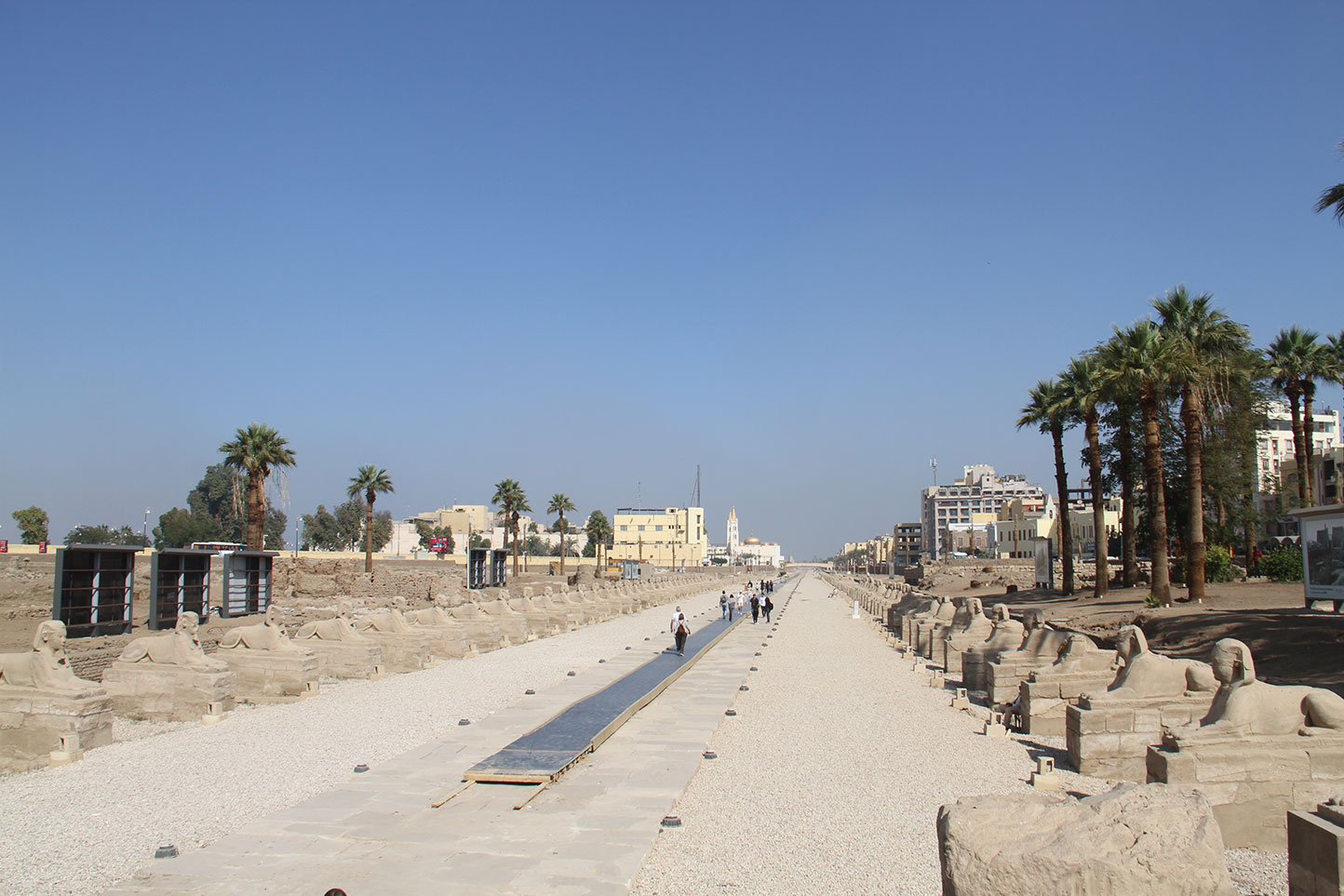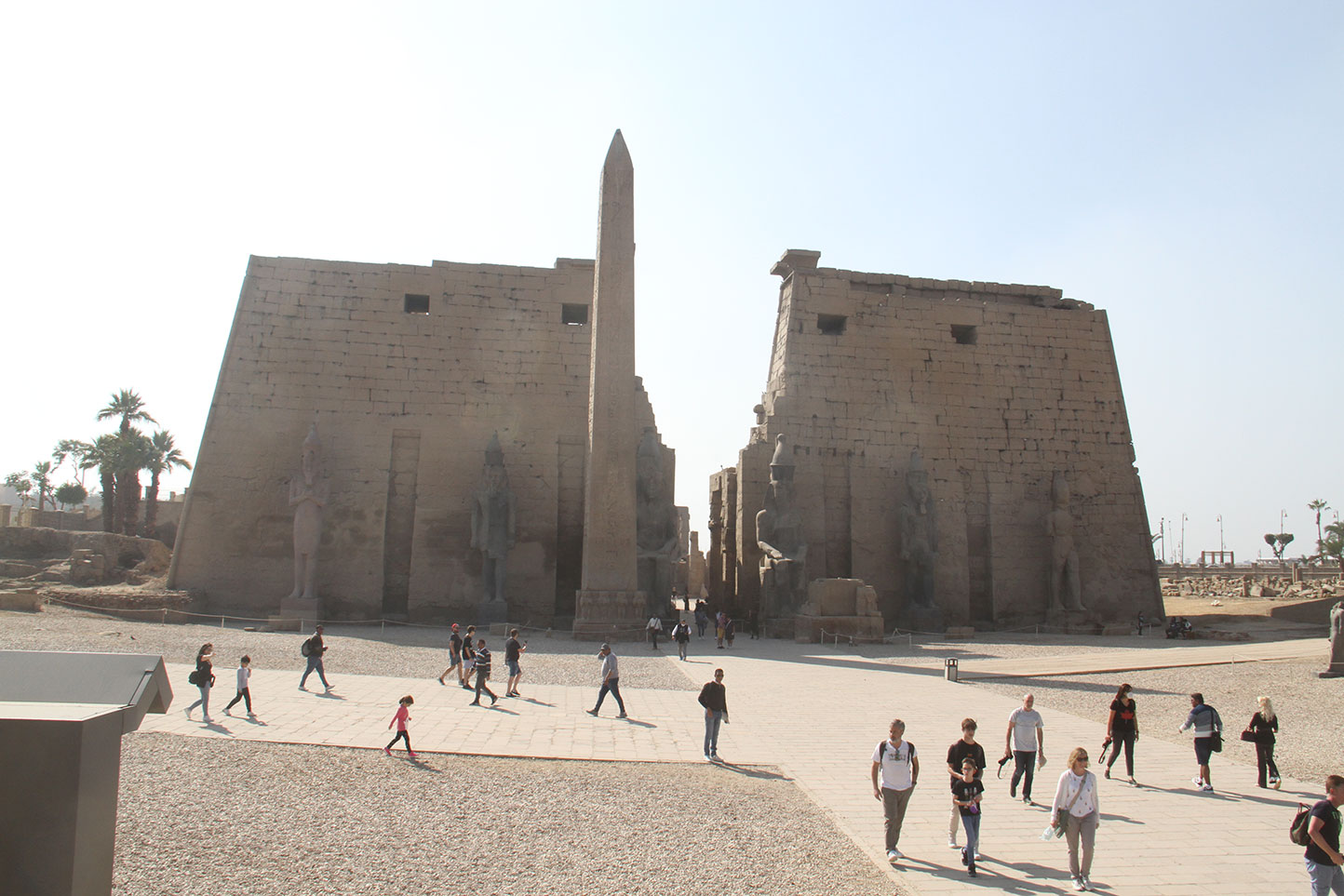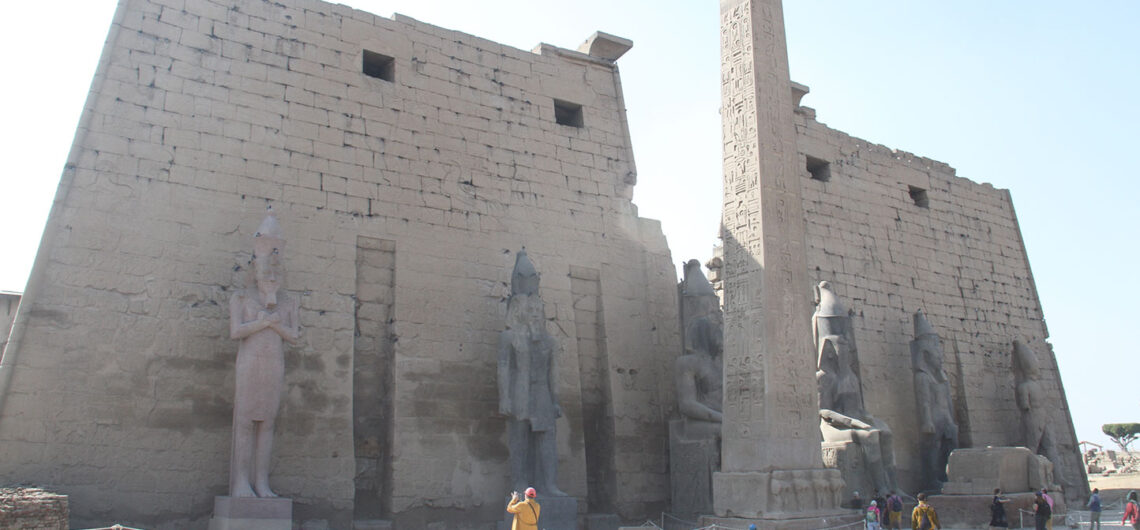Luxor Temple in Luxor Egypt | History, Facts, Plan, Map, Architecture, Deity, Statues | Discover What is inside, What does symbolize, Opening Hours, Ticket Price, Location and more…
Hurghada lovers Offer Luxury Hurghada to Luxor Tours | El Gouna to Luxor Tours | Makadi bay to Luxor Tours | Sahl Hasheesh to Luxor Tours | Soma bay to Luxor Tours.
Who are the builders of the Luxor Temple?
King Amenemhat III “Pharaohs kings” began the construction of this temple on the east bank of the Nile River in Thebes (now Luxor), then completed by King Ramses II and the temple was dedicated to the worship of the God Amun.
Date of construction: mid-1350 and 1400 BC.
The kings who built the temple: Amenophis III and King Ramses III.
Length: 803 feet.
Width: 181 feet.
Why was Luxor Temple built?
There are those who believe that King Amenophis III set up this temple for the glory of the god Amon Ra “The Egyptian Gods” and for his priests “High Priest of Amun“to recognize the legitimacy of his reign by recording the story of his divine birth of the God Amon Ra.
He celebrated the marriage of the God (Amon Ra) with his wife Mut once a year, and the procession of the gods begins from the Karnak Temple by boats on the Nile to the temple of Luxor and begins the entrance of the temple with the pylon built by Ramses II and in front of the facade there are two huge colossy representing Ramses II seated and it one of Festivals in Ancient Egypt.
Luxor Temple History:
- King Amenhotep III is considered the first to think of building the Luxor Temple in Thebes in 1390-52 BC.
- The young king, King Tutankhamun, completed building parts of the temple in 1336-27 BC.
- King Horemheb took care of the development of the temple in 1323-1295 BC.
- King Ramses II added the giant statues of himself and his wife in 1279-13 BC.
- The granite mausoleum was built by Emperor Alexander the Great in 332-305 BC.
- The purpose of building the temple is to worship the ancient Egyptian gods and beliefs “Funerary beliefs in ancient Egypt“.
- In the Coptic period of Egypt, the Hall of Columns was used as a Church for Coptic worship.
- The mosque of the Sufi Sheikh Youssef Abu Al-Hajjaj was built next to the church and is still available.
Luxor Temple Facts:
- The Luxor Temple is connected to the Karnak Temple through the rams or Avenue of Sphinxes “Sphinx Statues” with a length of 3 km.
- The Opet Festival was held annually to transport the procession of the god Amun, his wife, the God Mut, and their son, the God Khonsu, to visit the headquarters of the god Amenmopet “Ancient Egyptian Gods and Goddesses” in the Luxor Temple.
- The ancient Luxor Temple is one of the largest open museums around the world and history.
- The temple contains 3 religious places for three religions through the “Islamic religion” mosque, the “Coptic religion” church, the Ancient Egyptian Religion pharaonic & The religion of the ancient Egyptian.
- Sultan Muhammad Ali Pasha gifted the obelisk of Luxor Temple to France in 1833 AD.
- The temple is built of sandstone.
- The width of the temple = 181 feet and the length = 853 feet.
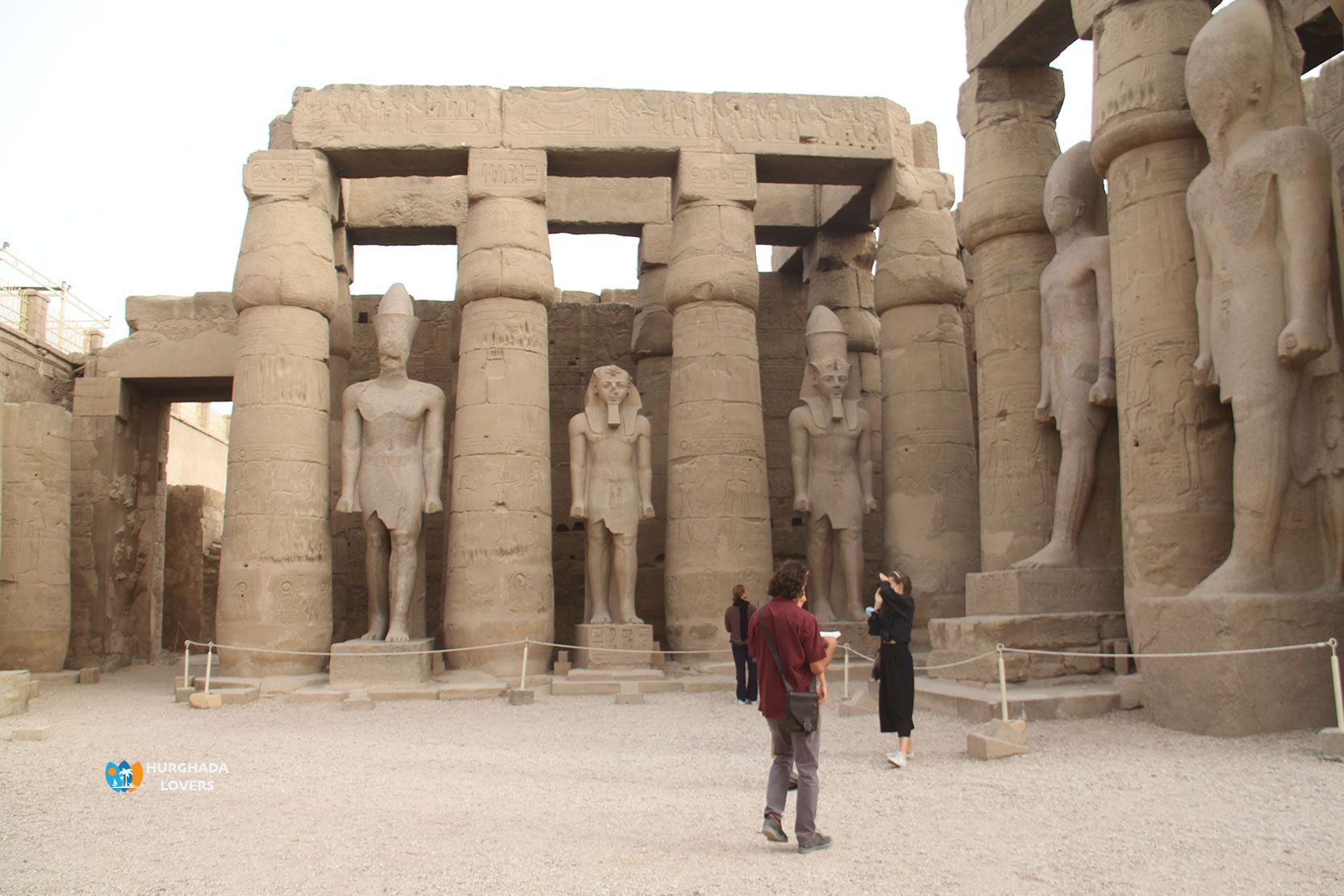
Luxor Temple Plan / Map:
- Rams Road “Sphinx Statues Street” 3 km.
- The first Pylon of King Ramses II
- 6 Colossal Statue of King Ramesses II
- Opening the court of King Ramesses II
- 3 Shrines of Queen Hatshepsut “Female Pharaoh” and King Thutmose III.
- The second Pylon
- 2 Colossal seated statue of Ramesses II
- The corridor of King Amenhotep III’s procession
- Court of the Sun King Amenhotep III
- vestibule
- Alexander Chapel
- Coronation Room
- Divine birthing room
- 12 Columnedhalls
- The three shrines of the sacred boats of Amun, Mut and Khonsu
- The perimeter wall of the temple.

Luxor Temple Architecture
Avenue of Sphinxes
Facts and history of the establishment of the most important monuments in the ancient Pharaonic civilization of Egypt which connected between Luxor Temple and Karnak, what does the road of rams mean, how many sphinxes are on the road, what is the distance and how many kilometres, and more.
The Road of Rams is a road that connects both Luxor Temple and Karnak Temple. This road dates back to approximately 3,500 years, and is about 2.7 miles long and 250 feet wide. The road was discovered in Thebes, which is currently Luxor. Learn more about the road Below.
Rams Road – Pharaonic Celebrations Road
- A 2,000-meter-long road linking Karnak Temple and Luxor Temple.
- The Opet Festival was held annually in the culture of ancient Egyptian civilization.
- The course of the celebration begins with the departure of royal boats from the Holy Mass from the shrines of the gods Amun, Mut, and Khonsu, the “Theban Triad,” in the Karnak Temple surrounded by the temple’s priests and ancient Egyptians. The royal procession moves on foot until it reaches the headquarters of the priests of Amun in the Luxor Temple, then completes the journey across the Nile River to The Western Monastery, where you can see the shrines of the Egyptian gods, religious beliefs, and the tombs of the nobles.
- This Pharaonic celebration and rituals are celebrated annually from a mosque or pilgrims’ mosque that was built in the Islamic era inside the Luxor Temple.
- The beginning of the path of rams was during the era of the modern state and was completed during the reign of Nectanebo, which dates back to the 30th dynasty.
- Avenue of Sphinxes was buried under layers of sand over the centuries, but it was found in 1949 by the Egyptian archaeologist Zakaria Ghoneim.
- The discovery of the road was part of the discovery of 8 statues near Luxor Temple.
- After the discovery of this road, there were many other discoveries, including the discovery of 55 statues in 1961 AD, and before that 17 statues were discovered in 1958 AD.
- Beginning in 1984 until 2000, this road was identified as a walkway with the presence of excavators to complete the excavations of antiquities.
- Projects to develop this road, which started in 2007 and stopped in 2011, were completed in 2017 and ended in 2021.
Description of Avenue of Sphinxes
- Avenue of Sphinxes comes with a stone pavement, and there is a row on both sides of the path that amounts to 1,300 statues.
- The statues come in the form of a full ram or a ram’s head on a human body.
- Other forms of statues include the head of a human being on the body of a lion, so this road was named after the path of rams.
- This road is considered one of the most important historical roads and corridors, where this corridor witnessed the processions of deities dating back to the era of the 18th Dynasty, which was during the reign of Queen Hatshepsut.
- Among the celebrations that were also held in this way is the celebration of the Sabbath Day, which is one of the most famous holidays that were held in the past.
- The number of original statues found in this corridor is 1057, and they come in three shapes.
- The first figure is the body of a lion with the head of a ram, and the statues are located approximately from the Karnak temple on an area of 1000 feet.
- While the second figure is the complete form of the ram. The statues were built in a remote area during the era of the Eighteenth Dynasty, after which it was transferred to the Karnak area.
- The third figure, the Sphinx, comes approximately a mile long to Luxor Temple.
History of the Rams’ Road
- The purpose of establishing the Rams Road is to be a path for the processions of sacred kings, such as ministers and high priests, as well as the great kings of the Pharaohs.
- The coronation of kings in the past used to take place in the celebration of the Feast of the Sabbath, which was held in the way of rams.
- Amenhotep III was the king who started building the road during his reign, and he also started the construction of the Luxor Temple.
- Despite the start of construction during the reign of Amenhotep III, “Nakhtebnu I” is considered the main founder of this road.
- The statues on both sides of the road refer to the symbol of the god Khnum, the Egyptian god of fertility.
- This road witnessed a large number of celebrations and processions, including the procession of the King and his followers of ministers and high priests.
Renovation and opening of the rams road
- The Egyptian government took a bold decision to remove all residential buildings, gatherings, and shops that violate the law, which are located on both sides of the Rams Road, in order to re-dig and excavate it and bring it back to life as it is now, and it was opened by President Abdel Fattah El-Sisi.
- There were objections from some Egyptian journalists, such as the writer Samir Gharib and a French writer who lives in Luxor, in addition to the Chicago House Institute, and the international organization UNESCO intervened to find out the details of this development and decision.
- The people were compensated with alternative housing or received sums of money in exchange for leaving their homes and shops, under the leadership of Dr. Samir Farag, the Egyptian government, and workers at the Supreme Council of Antiquities in the city of Luxor.
- The Sphinx statues were dug and excavated under the dirt over long distances, until more than 50% of the statues were discovered and completely restored by a highly efficient scientific team and Egyptian Egyptologists.
- During the excavation, a special stone painting of the chief priest of King Setnectapak-en-Khonsu, one of the kings of the Twentieth Pharaonic Dynasty, was discovered.
- On November 25, 2021, Al-Kabash Road was opened in the presence of Egyptian President Abdel Fattah El-Sisi.
- This opening caused a very big uproar and even surprised not only the Egyptians.
- Where the restoration process took nearly 7 centuries.
- The march was attended by a team of actors in pharaonic costumes, light effects, dancers, boats on the Nile and horse carriages.
- In addition to the role of the orchestra, which played a historical hymn, and at the beginning of the celebration there were 3 sacred boats designed in the Pharaonic style.
- The boats were designed to symbolize the holy trinity of Thebes, Amun, Khonsu and Mut.
- In the past, such rituals were held on the festival of harvest and the feast of the seat of the king and know more about The Luxor Experience.
The second Pylon:
It contains 2 black granite statues of King Ramses II, engraved on the base with the names of the king and the sign of Sima Tawi.
In front of the façade of the temple there were two obelisks, one still standing in its original place and the other adorning the Concorde Square in Paris, followed by the court of Ramses II, surrounded on three sides by two rows of columns in the form of a closed Papyrus bouquet.
Two pink granit obelisks were erected, but one of the obelisks was moved to the Concorde Square in Paris, France, in 1836, with a height of 23 meters and a weight of 220 tons.
The second obelisk was erected on the east side in front of the north tower of the first pylon and the obelisk is 23 meters high on a solid base of 2 and a half meters and the latter weighs 257 tons.
High reliefs were engraved on the base of the obelisk depicting 4 baboons clapping the sun at sunrise and inscriptions were made in hieroglyphics “The ancient Egyptian Pharaonic language” in the name of the Pharaonic king Ramses II, as well as drawings on top of the obelisk showing the ceremony of the presentation of offerings from the king to the god Amon Ra to know more about The Art of Painting in Ancient Egypt.
The entrance to the temple is one of the most beautiful unique architectural designs, with a first tower reaching a height of 24 meters and drawings of the victories of King Ramses II in many battles such as the Battle of Kadesh and the victories of the 25 Nubia Pharaonic Dynasty “Black Pharaohs” to know more about Architecture in ancient Egypt.

Pharaonic King Ramses II
The pylon is 24 meters high and 65 meters wide and the entrance to Luxor Temple is centered as a huge door of unique style.
West (right) side of Luxor Temple
You will find drawings on the wall of King Ramses II and military advisors in the far north, then we look in the middle, we will find drawings of king Ramses II’s battles against his enemies, then at the far right we will find the drawings of king on his pharaonic war chariot during the battle to know more about Architecture in ancient Egypt.
East (left side) of Luxor Temple
King Ramses II was painted on the walls riding his Pharaonic war cart throwing arrows as well as drawings of the dead, in addition to some soldiers being depicted fleeing for fear of the king with a depiction of Prince of Kadesh describing him as fearing the king as he boarded the military vehicle to know more about Art in Ancient Egypt.
The battle was described in complete hieroglyphics on the bottom of the pylon, as well as 4 spaces between the colossy to place the flagpoles and 4 windows at the top of the niches to attach the flags.
Six large statues of King Ramses II (4 standing statues and two statues on each side) were built, overtime, climatic conditions and erosion remained only a statue currently on the far right of the entrance. But currently the colossy are all well restored and well put in their original places to know more about Sculpture in Ancient Egypt.
Also, on the east (left) side of the Luxor Temple are 2 huge statues on both sides of the entrance of King Ramses II sitting on the throne, as well as drawings and inscriptions on both sides of the throne showing the Union of the two Lands in Upper and Lower Egypt.
A small statue of Queen Nefertari is located on the side of the throne next to King Ramses II and another statue on the right side, as well as a base under the statues engraved with the drawings of the prisoners and names, each statue is 14 meters high.
Inscriptions and drawings of King Ramses II’s relationship with the gods were drawn on both sides of the entrance from outside the temple, such as the drawing of the Sacred Triad, the God Amon and the Nubian King Shabaka with the gods Amon Ra, Mut, God Montu and God Hathor, in addition to the pharaonic drawings on the left tower of the pylon of King Ramses II with his wife during the celebration of the feast of God Min with drawings of priests and god as it was in the ancient beliefs at the time of the Egyptian Pharaohs.
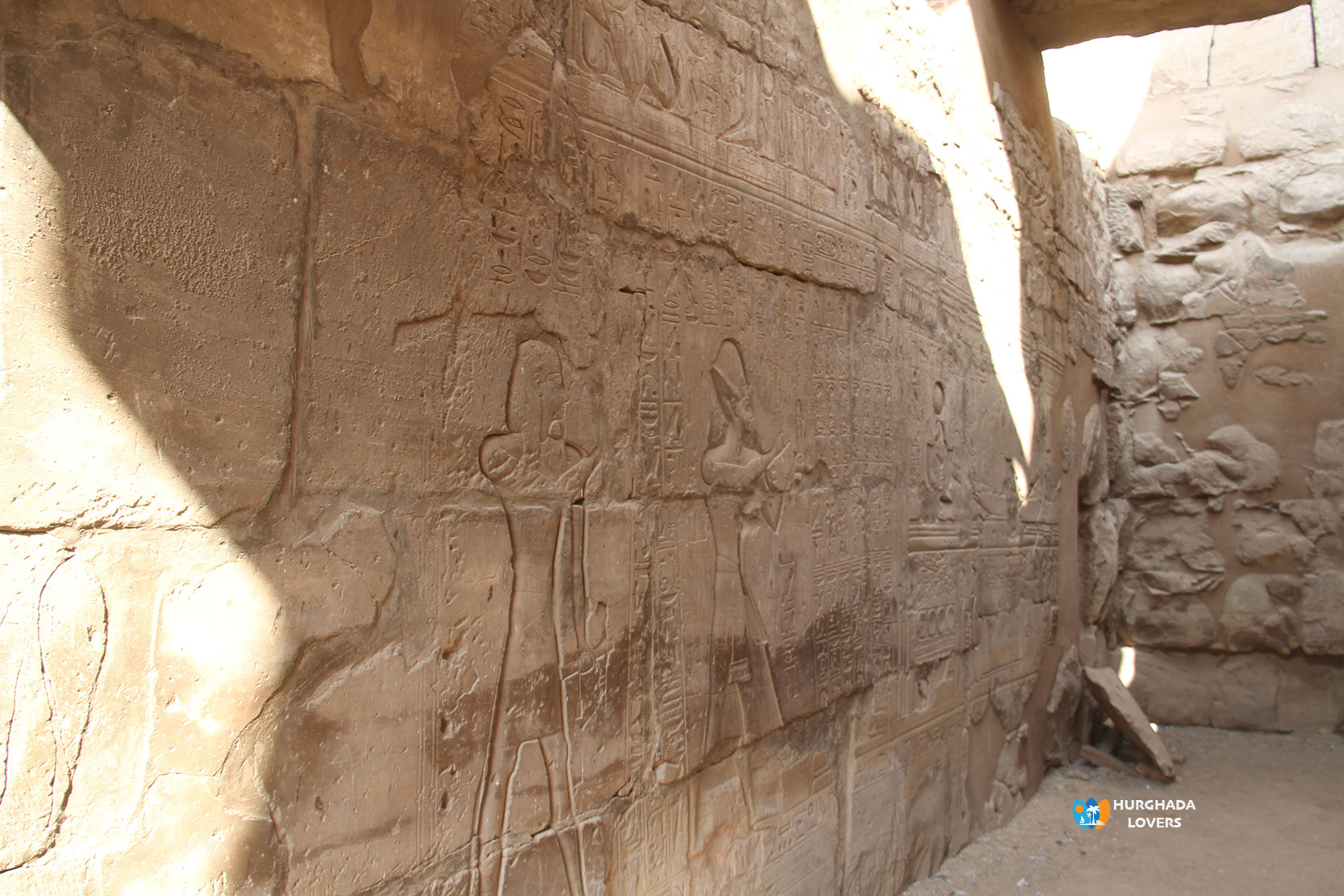
The first courtyard of Luxor Temple
King Ramses II built a very large courtyard 57 meters long and 51 meters wide in the direction of the temple of Karnak, where a roof on two rows of columns is placed on both sides of the court.
The columns which are 74 in number are designed in the form of the Pharaonic papyrus plant and the heart capitals have the shape of buds of papyrus plant known since the time of the Pharaonic Old Kingdom.
The chapels of King Thutmosis II:
The chapels are located on the northwest side of the court of King Ramses II, which is specific to Queen Hatshepsut and the Pharaonic King Thutmosis III, in addition you will see 4 columns dedicated to the god Amon Ra in the middle and the east chapel is dedicated to the sacred boat of the goddess Mut and to the east we find that of the son of Amon, the God Khonsu, who is nicknamed the God of the Moon.
Pharaonic drawings and inscriptions were drawn on the walls of the chapels representing the offerings to the divine boats of the triad.
Courtyard of the 14 columns in the temple of Luxor
It is the private entrance of King Amenophis III, and the building is 24 meters high and 65 meters wide, where the entrance is centered by a huge door with spaces to place the masts on it in addition to 6 statues of Ramses II, two chains and a huge base with 4 baboons on it.
Temple of Amenophis III:
The place of the Divine Triad (Amon, Mut and Khonsu) and they are (the Great God, his wife, their son the God of the Moon). This temple is considered the pride of Egyptian architecture during the Eighteenth Dynasty and is generally called Luxor Temple, and the temple has a rectangular plan, its parts are located on one axis, surrounded by columns with papyri form capitals open or closed and consists of the following parts:
- The first pylon is formed by two high towers with a slight slope.
- The spacious open courtyard, surrounded by a columned roof, is intended for the public.
- The path leading to the hall.
- The large hall with its ceiling, surrounded by high columns, is dedicated to priests and the king.
- The main chapel of the God Amon at the bottom of the temple where the statue of God is located.
- The two other chapels of the gods (wife, son and perhaps others).
- The huge brick surrounding wall.
- The building in front of the outer wall where two colossy of the king seated + 4 standing colossi + two obelisks.
- The road leading to the temple is flanked on both sides with statues of lions and heads of rams.
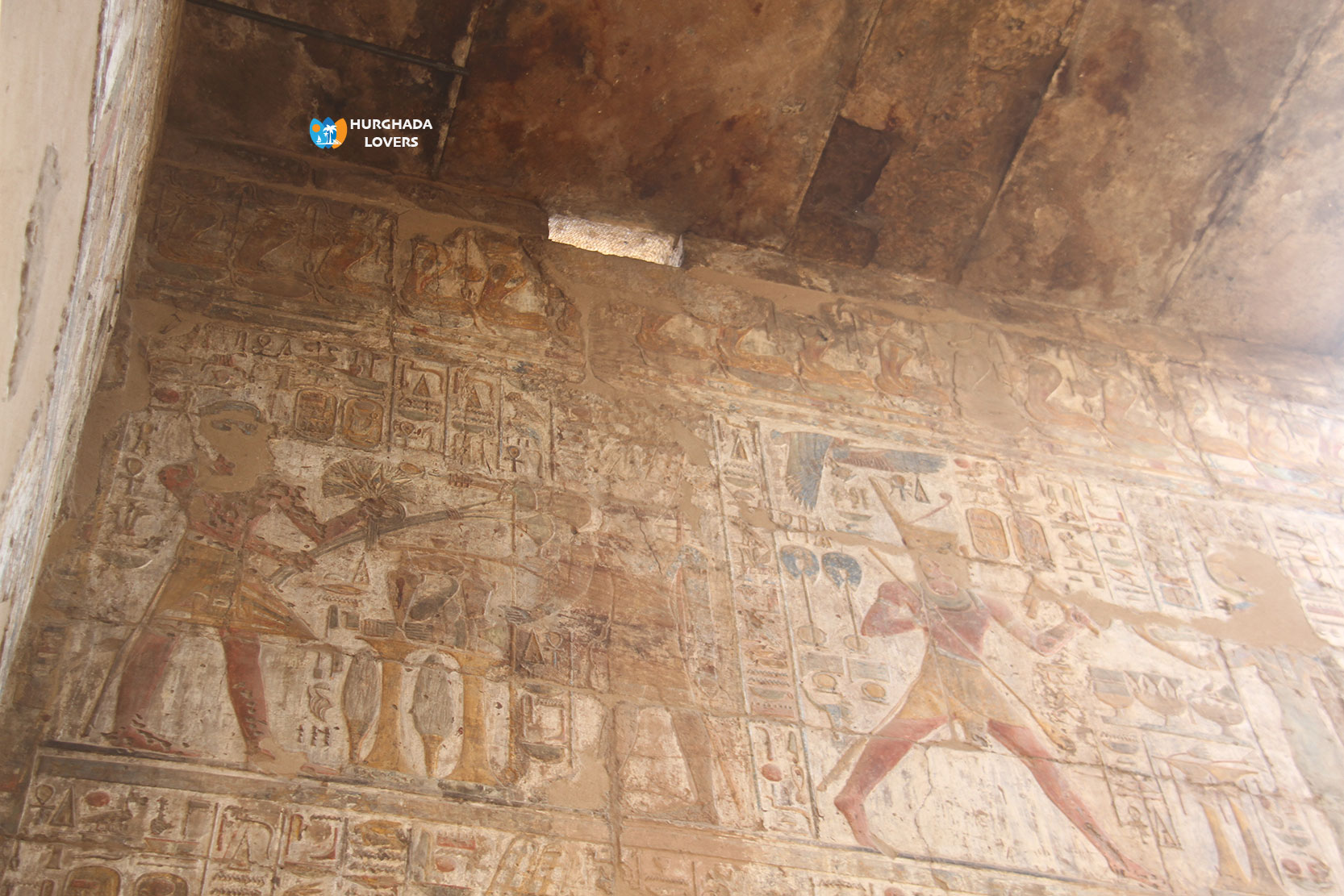
The corridor of the procession of King Amenhotep III:
The portico consists of 14 columns with open papyrus crowns, 19 meters high for each column. King Tutankhamun, King Horemheb, and king Ay developed and restored the columns during their reign.
Court of the Sun King Amenhotep III:
The Great Column Hall in Luxor Temple has an area of 45 meters by 46 meters and contains 60 columns with pink capitals on 3 double sides.
Imperial cult chapel:
- It was built in the Roman era in the third century AD, and inscriptions and scenes were painted for Imperator Diocletian and his three companions, and Maximilian with their Caesars, Constantius Chlorus and Galerius.
- Two rooms for the god Mut and the god Khonsu.
Vestibule or second antechamber:
A room containing 4 columns and used to offer offerings to the god Amun.
It contains inscriptions on the walls of King Amenhotep III presenting offerings to the god Amun.
Parki tomb of Amun:
Inscriptions on the walls of Alexander the Great or King Amenhotep in front of the god Amon.
coronation room:
Inscriptions on the walls of King Amenhotep III as a symbol of the sun and during the coronation of the throne of ancient Egypt.
room:
Inscriptions on the walls of King Amenhotep III, “the divine birth scene”
Tomb of Alexander Park of Amun:
The hall contains 12 columns.
Holy of Holies:
- Holy of Holies room was built in the era of King Amenhotep III and contains 3 small rooms for offering offerings to the Luxor Trinity of Amun, Mut and Khonsu.
A wall around Luxor Temple made of soft bricks.

What is inside of the Luxor Temple?
The temple is 853 feet long and 181 feet wide, it is built between two periods of The New Kingdom, from the second half of the 18th Dynasty until the beginning of the Nineteenth Dynasty, where Luxor Temple was built in the mid-1350 and 1400 BC centuries.
Built to worship Amon Ra, his wife Mout and their son Khonsu, the Pharaonic King Tutankhamun developed the temple and completed the construction by completing the Pharaonic reliefs and inscriptions engraved on the columns and walls of the temple’s colonnade.
The 3 chapels behind the first pylon are dedicated to the triad of Karnak were restored at the time of the Pharaonic king Ramses II, as they were already built during the reign of Queen Hatshepsut and that of King Thutmosis III of the 18th dynasty.
It was once called in ancient Pharaonic Egyptian as “Ipet Resit”and means the southern harem or southern chapel where the annual divine meeting between the king of gods Amon Ra and his wife the goddess Mut takes place, as the temple was dedicated to the triad of Karnak Amon Ra, Mut and Khonsu.
The Pharaoh kings Amenophis III and Ramses II chose the strongest stones of great qualities such as limestone, sandstone, alabaster, and granit.
King Amenophis III built a large hall with 64 columns and a hall of 32 columns, both nicknamed “The Court of the Sun”, because it was open from all sides to look at the sun and sky as the God Amon Ra was a solar God.
King Ramses II took care of Luxor temple by building his own courtyard in front of the giant buildings of his ancestor Amenophis III.
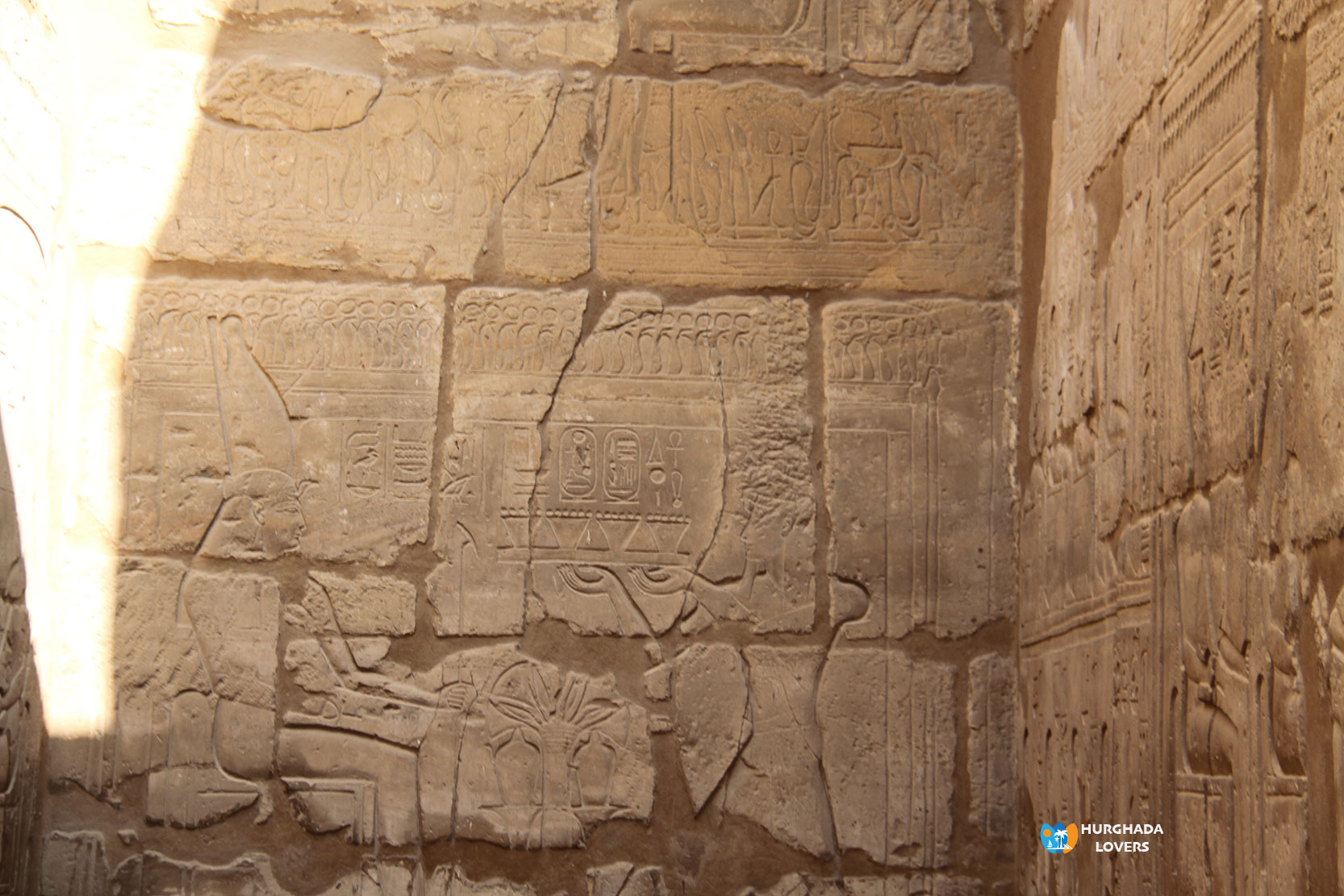
Luxor Temple has distinctive architectural designs with (Hall 14, The Chapel of Alexander the Great, The Divine Birth Chamber of King Amenophis III) and also Pharaonic papyri form columns with a unique architectural style.
One of the most important festivals celebrated in Luxor Temple , where the journey of the god Amon’s procession from Karnak Temple in Luxor is recounted every year.
There is an overland route linking the two temples Karnak and Luxor called the Allee of the Sphinxes.
)you could today see this alley that is recently cleared from the silt that covered it for long centuries )
The Pharaonic architect Amenophis son of Hapu was the one who supervised the architectural construction of Luxor Temple.
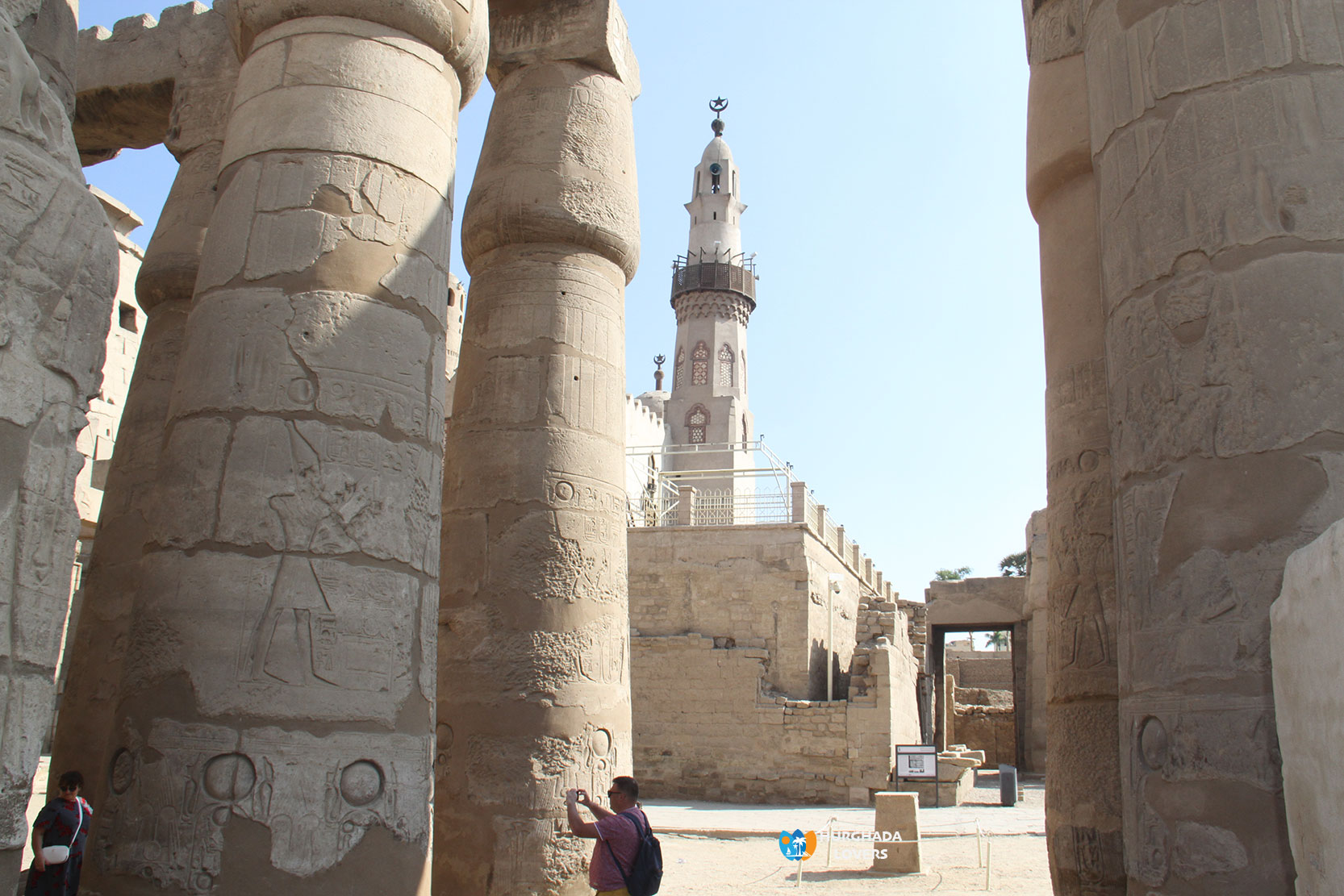
Luxor Temple Deity:
- Amun God.
- Mut God.
- The god Khonsu, “the moon god”.
- God Amenmobet.
- The god Ra
- God Mont
- God Montu
- God Hathor
- God Nut
- Go Men
- God Maat.
Luxor Temple Statues:
- Sphinxes
- 6 Statues of King Ramses II.
What is so special about Luxor Temple?
There are reliefs and texts on the walls behind the columns depicting the king in the presence of the gods, and on the west side of the court there are 6 statues separating the columns as well as drawings of the king’s religious procession.
The reliefs on the walls are in the façade of the temple tell us the details of the famous Battle of Kadesh, which was led by King Ramses II during his reign, as well as other wars along the walls of the temple just behind the first pylon to represent his struggle against the people of the sea and his Asian wars to know more baout The army in ancient Egypt.
One of the features of the construction of Luxor Temple is the “temple axis”, where architects-built temples on the east bank of the Nile in the same direction as the west east axis, while the temples were built on the west bank of the Nile in the direction of the east-west axis.
But strangely, the temple was built in the north-south direction with the same line as the temple of Karnak, with the direction of the alley of the Sphinxes or the road of the Rams.
But during the reign of the Pharaonic king Ramses II, he changed the course and axis of all the columns and temples.
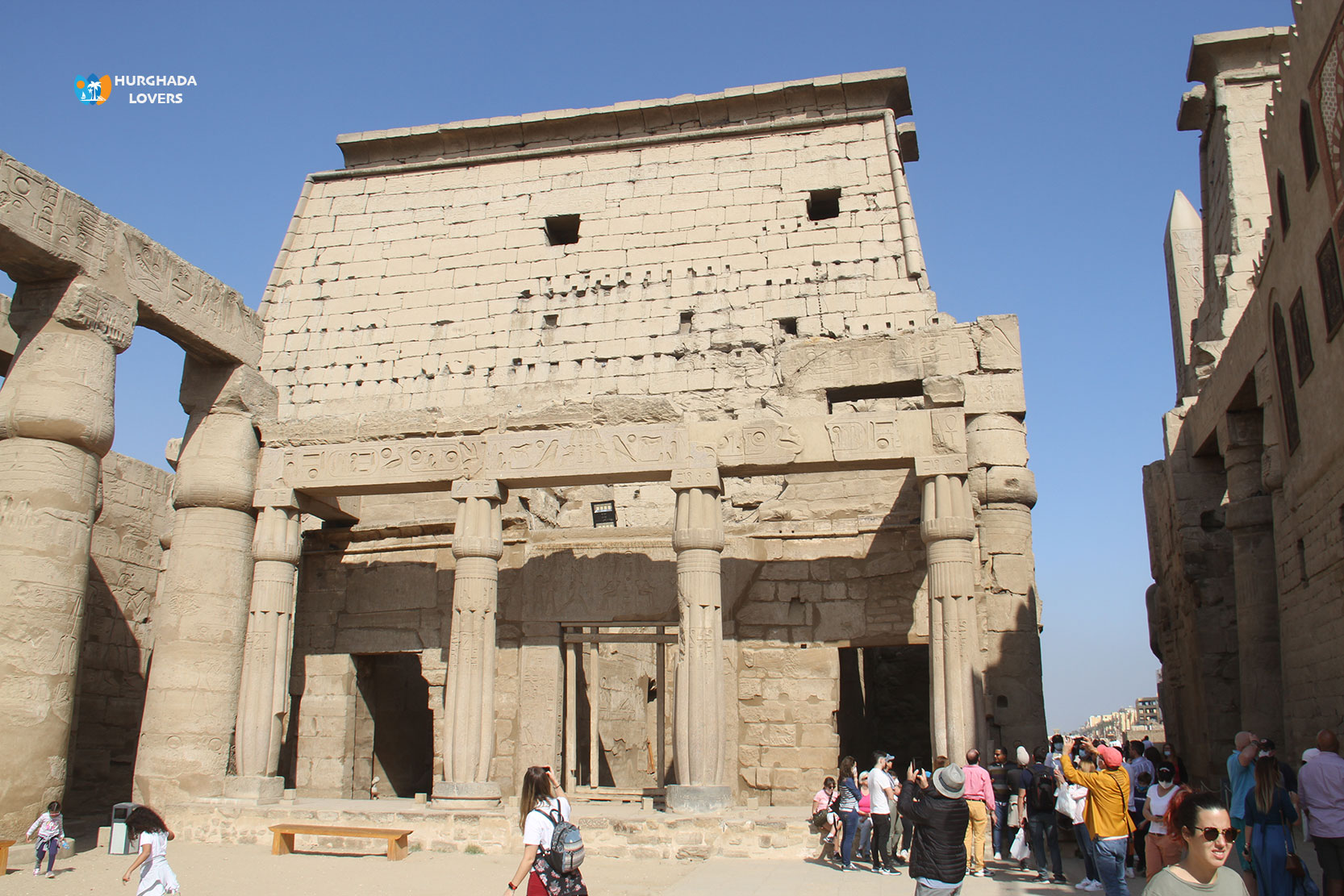
What does the Luxor Temple symbolize?
The Pharaonic king Amenophis III was in order to confirm before his people and opponents his pharaonic family lineage to the God Amon and that he is of his descent and that he has the first right to the throne of Egypt, where he created the birth hall and registered his birth on the wall and walls of the whole room.
There is another opinion of scholars and Egyptology that the reason for the construction of King Amenophis III this temple is due to the satisfaction of the priests of the god Amon, so that he could become king on the throne of ancient Egypt as a legitimate king, where he painted special drawings of the God Amon describing him as the god of fertility and called “Amon Ra Ka Mut Ef” or Amon Ra the bull of his mother.
You should know that it is a constitution for him to assume the throne of Egypt under the Pharaohs to be a legitimate son of Pharaoh or a pure dynasty of princesses or to marry the king’s eldest daughter, but not all conditions applied to King Amenophis III, who was of a non-Egyptian mother and his wife is not from the royal family.
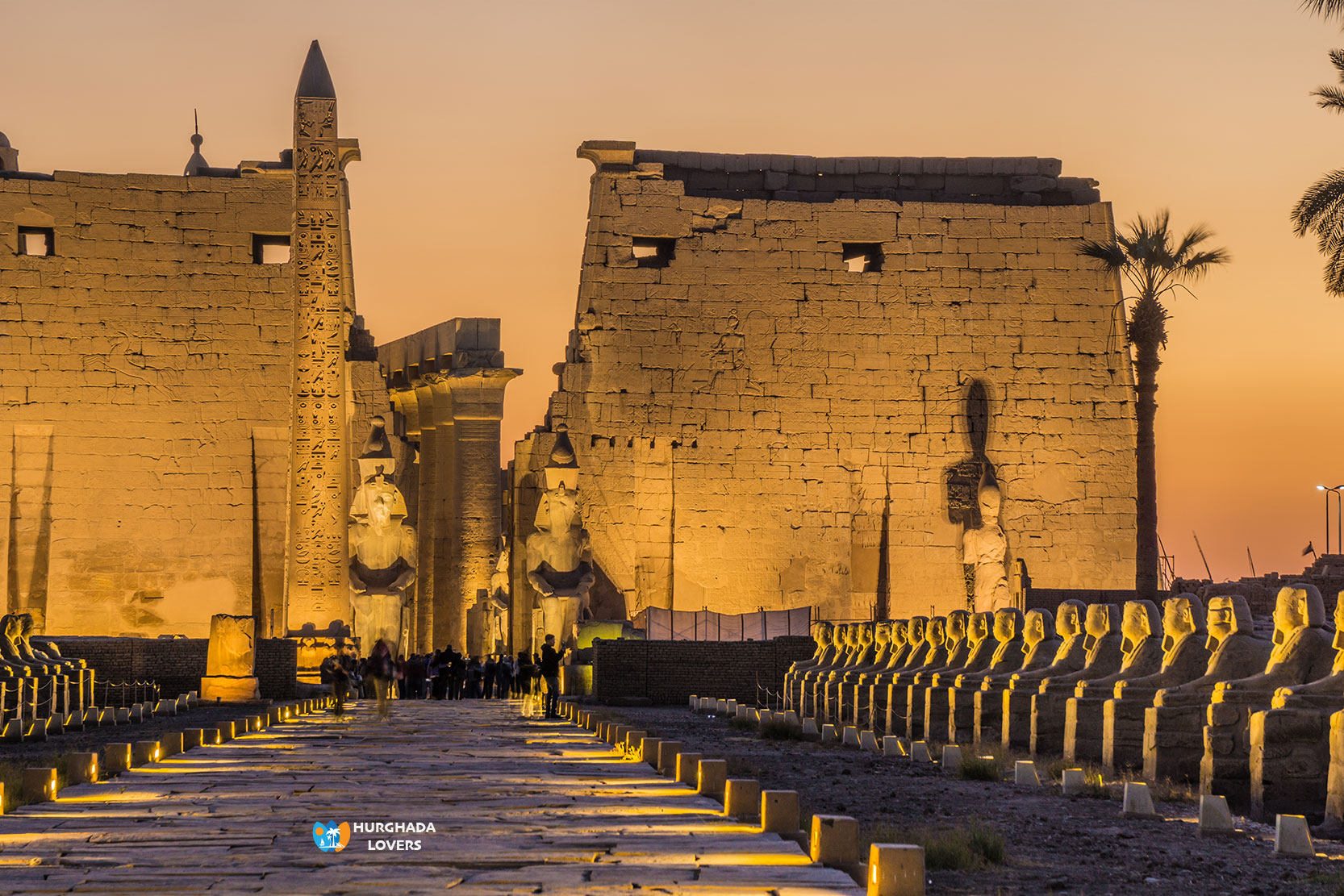
About King Amenophis III:
He took the solar name of Neb Maat Ra, “Maat the Lady of Truth and Justice”, who wrote several times about the cuneiform paintings of Tell el-Amarna the capital of his son King Akhenaton.
King’s mother, Mut Em Wya, is called “the goddess Mut in her divine boat” in the prominent inscriptions of the Luxor Temple, which resemble her husband, with whom Amon repeated what he did before with Queen Ahmose Nefertar, wife of King Thutmose I. We know very little about this lady.
The British Museum preserves a black granit model of a solar complex, but the statue of the Queen is broken from the middle, and a statue was found at Dendera is no longer enough for the Queen, and we inform our readers that the view that she is the Princess of the Fields, the daughter of King Artama, whom King Thutmose IV married and eventually joined his harem.
In the middle of the eighteenth dynasty, the pharaohs took women from neighboring countries, but he never said: Mut Em Wya, coming from Mitani, took an Egyptian name upon her arrival.
The Egyptian Museum preserves an amazing head of King Amenophis III, the sculptor gave the king the distinctive features of a southern Egyptian: the long Mongolian nose and eyes, the slightly gammed chin and the statue of the sphinx in Leningrad that looks very much like him, but the expression is younger and nowadays we encounter such features in Thebes, and the sculptor who made them models of his work is very close to King Amenophis III.
The historian Manethon credited with being 34 years old, this figure is closer to the truth, and he died in the 37th year of his reign.
is the history of the establishment of ancient Egypt’s most important Ceremonial Pharaonic Temples, and what are the secrets of the construction of the temple, his reliefs and religious texts “Coffin Texts” engraved on its pillars.
History Of Egyptian & Entrance ticket prices, visiting hours and more temples of the Pharaonic Civilization.
Details of Luxor Temple from the inside and the most important Pharaonic monuments in Luxor, information, and details about the most important monuments of Luxor Temple that you did not know before, to begin your historical journey into the details of the ancient Pharaonic civilization & Things to Do in Egypt.
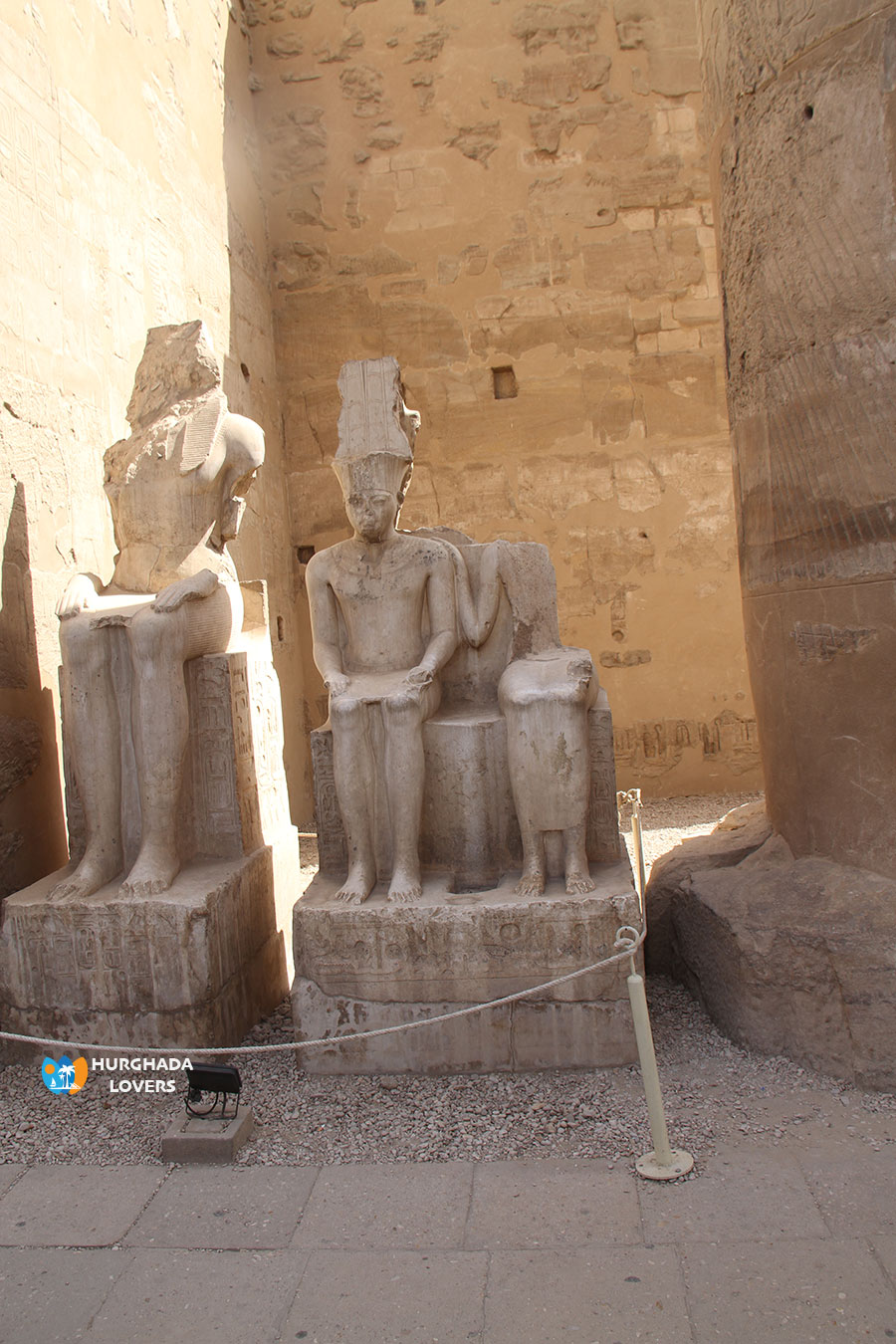
Luxor Temple Location:
East Bank, Luxor, Egypt.
Luxor Temple Opening Hours:
Open Every Day From 06:00 AM To 08:00 PM
Luxor Temple Ticket Price:
Foreigners:
Adult: EGP 400
Student / Kids from 5-10 Years: EGP 200.
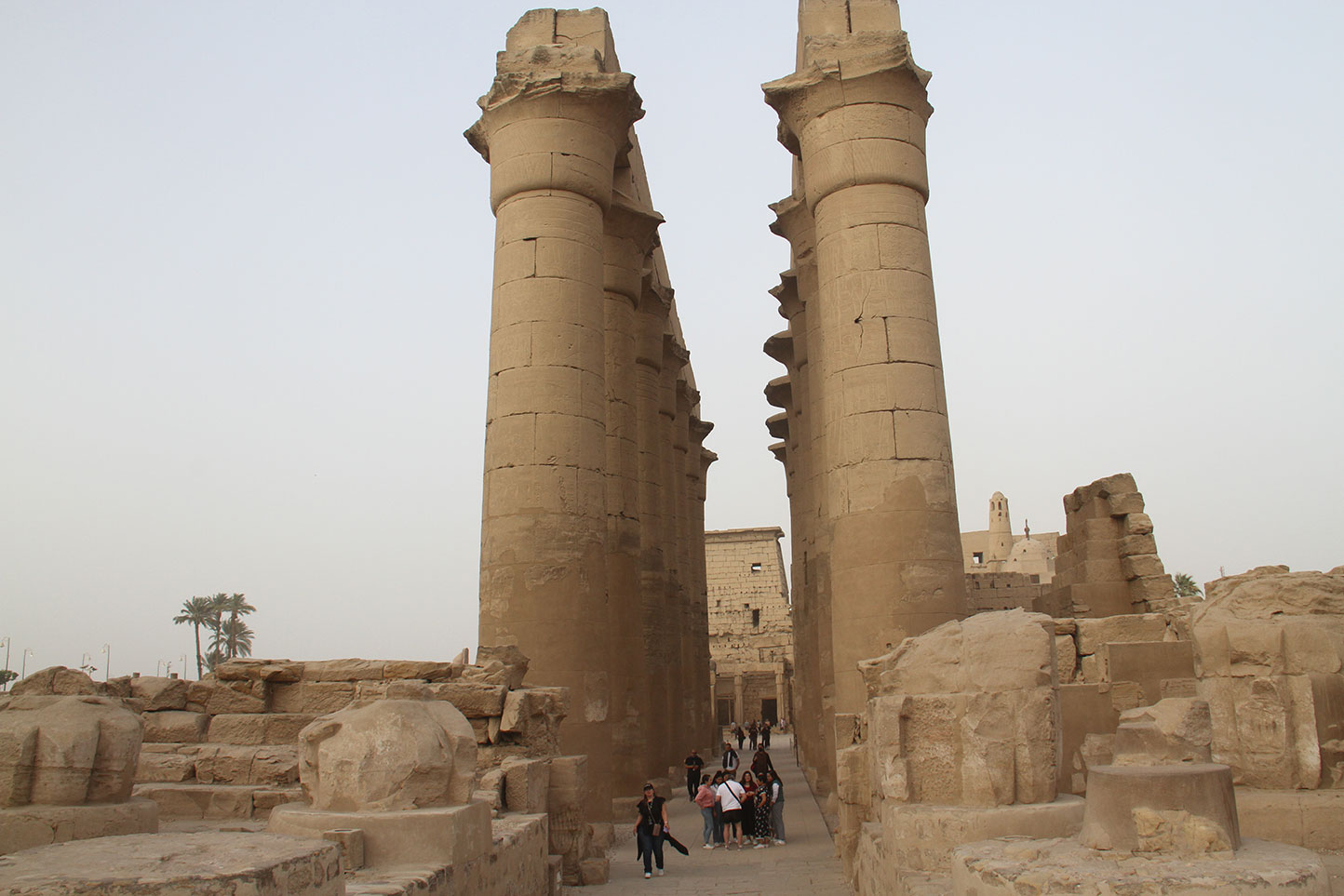
Egyptians/Arabs:
Adult: EGP 40
Student / Kids from 5-10 Years: EGP 20.
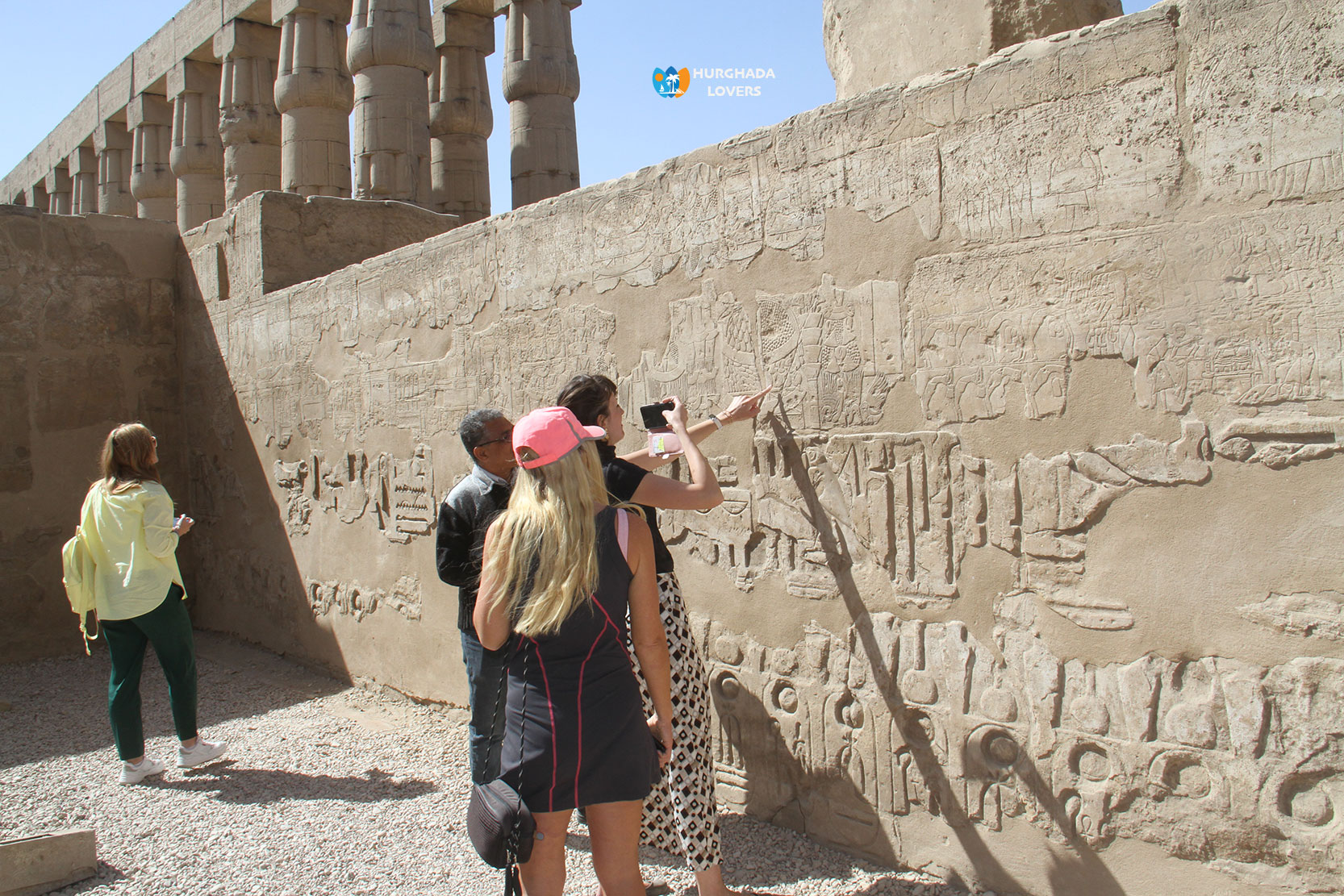
FAQ:
How much does Luxor Temple cost?
180 Egyptian pounds
What happened to the Luxor Temple?
Written by: Tamer Ahmed Abdel-Fattah | Tourism Expert | Tour Operator in Hurghada
